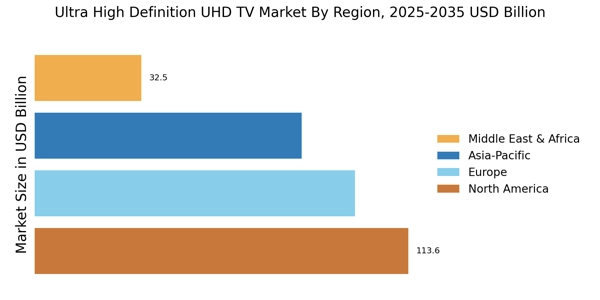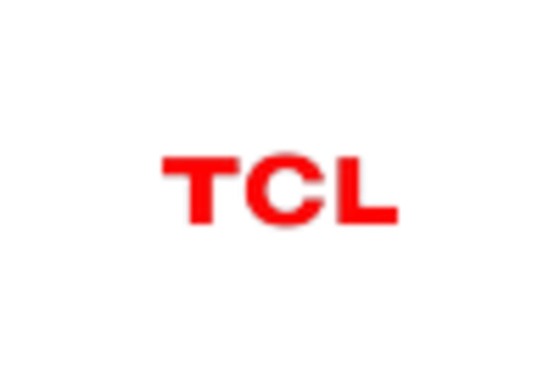Competitive Pricing Strategies
The Ultra High Definition UHD TV Market is witnessing competitive pricing strategies that are making UHD TVs more accessible to a broader audience. Manufacturers are increasingly adopting aggressive pricing tactics to capture market share, which is likely to stimulate demand. As of October 2025, the average price of UHD TVs has decreased by approximately 20% compared to previous years, making them more affordable for consumers. This price reduction, coupled with financing options and promotional offers, is expected to encourage more consumers to upgrade to UHD technology. The competitive landscape is thus fostering an environment where UHD TVs are not only desirable but also attainable.
Integration of Smart Home Technology
The Ultra High Definition UHD TV Market is being shaped by the integration of smart home technology. As households increasingly adopt smart devices, the demand for UHD TVs that can seamlessly connect with these systems is likely to rise. Features such as voice control, compatibility with smart assistants, and integration with home automation systems are becoming essential for consumers. Recent trends indicate that nearly 60% of new UHD TV purchases are made by consumers who prioritize smart features. This integration not only enhances the user experience but also positions UHD TVs as central components of modern smart homes, thereby driving growth in the UHD TV market.
Rising Demand for Streaming Services
The Ultra High Definition UHD TV Market is significantly influenced by the rising demand for streaming services. As more consumers subscribe to platforms offering UHD content, the need for compatible televisions increases. Major streaming services are investing heavily in producing original content in UHD, which is likely to drive sales of UHD TVs. Recent data suggests that the number of UHD content titles available on streaming platforms has increased by over 50% in the past year. This trend indicates that consumers are not only seeking UHD TVs for traditional broadcasting but also for an enhanced streaming experience, thereby boosting the UHD TV market.
Increased Consumer Awareness of UHD Benefits
Consumer awareness regarding the benefits of Ultra High Definition UHD TV Market is on the rise. As consumers become more informed about the advantages of UHD technology, such as improved resolution and enhanced viewing experiences, they are more inclined to invest in UHD televisions. Educational campaigns by manufacturers and retailers are playing a crucial role in this awareness. Surveys indicate that nearly 70% of consumers recognize the superior quality of UHD over standard HD, which is likely to influence purchasing decisions. This growing awareness is expected to contribute to a steady increase in UHD TV sales, as consumers prioritize quality in their entertainment choices.
Technological Innovations in Display Technology
The Ultra High Definition UHD TV Market is experiencing a surge in technological innovations, particularly in display technology. Advancements such as OLED and QLED have enhanced picture quality, providing deeper blacks and more vibrant colors. These technologies are not only improving the viewing experience but also driving consumer demand. As of October 2025, the market for UHD TVs is projected to grow at a compound annual growth rate of approximately 15%, indicating a robust interest in high-quality displays. Furthermore, the integration of smart features, such as voice control and AI-driven content recommendations, is likely to attract tech-savvy consumers, further propelling the UHD TV market.


















Leave a Comment